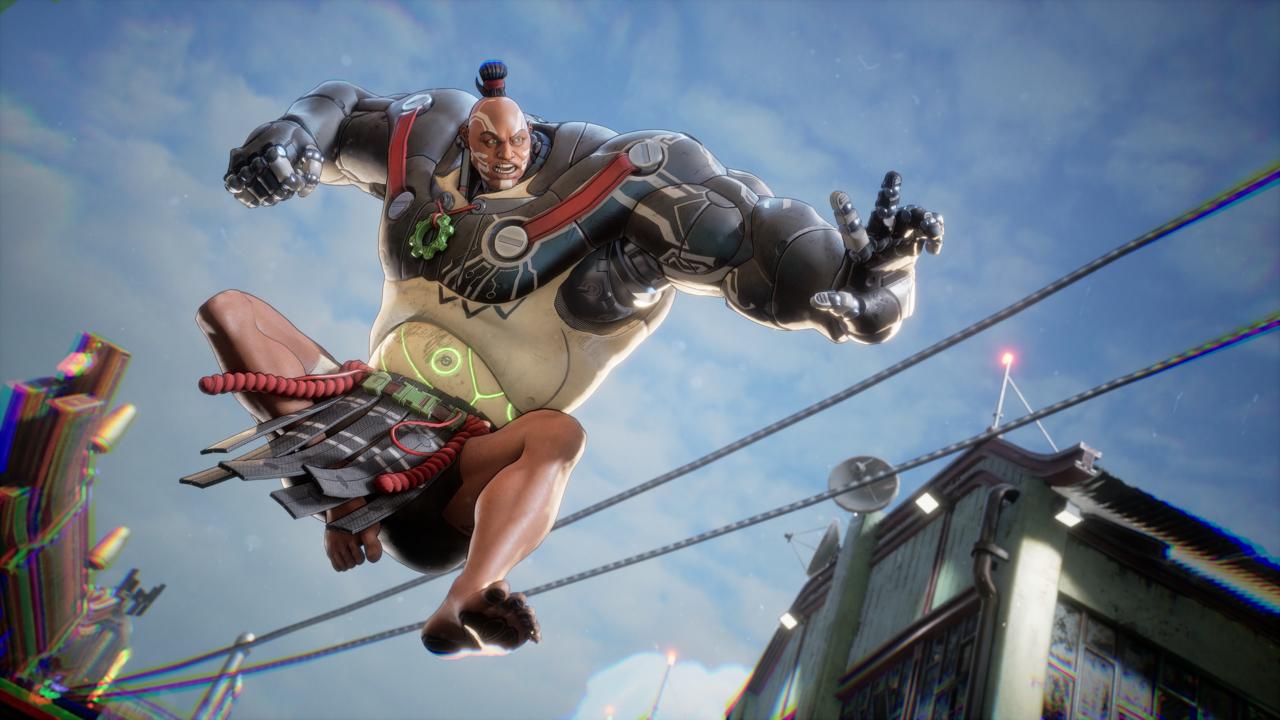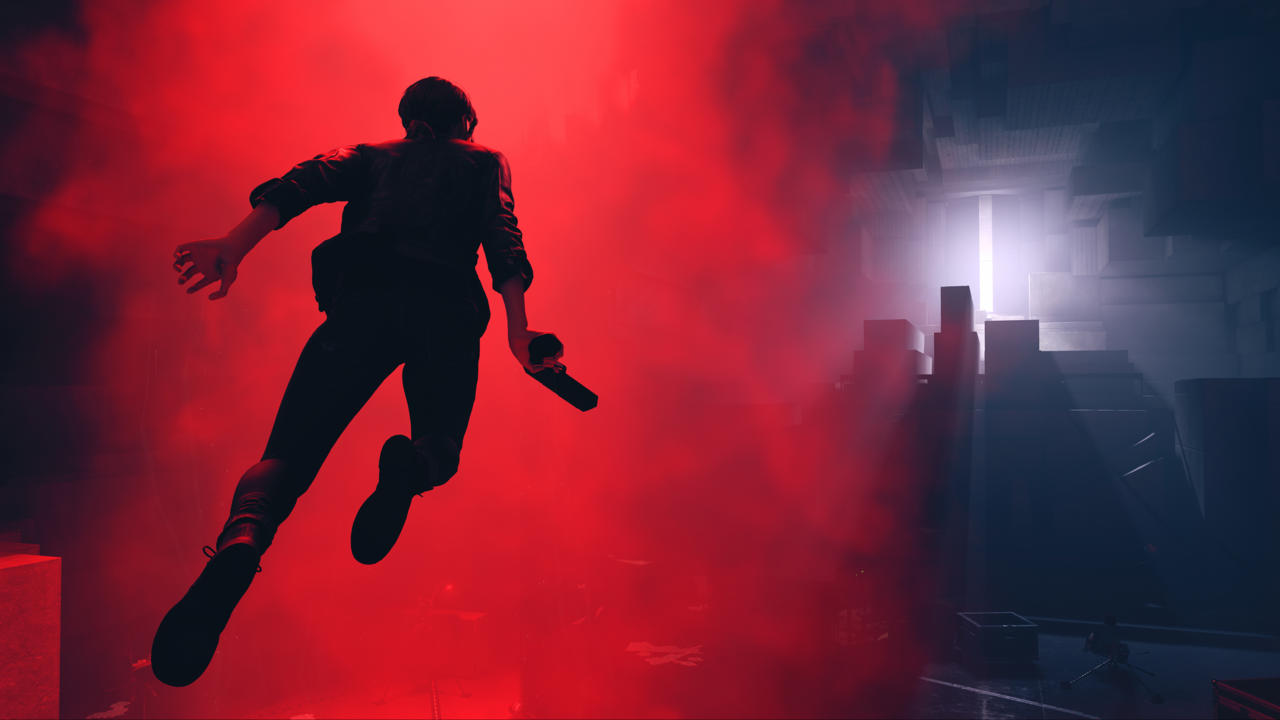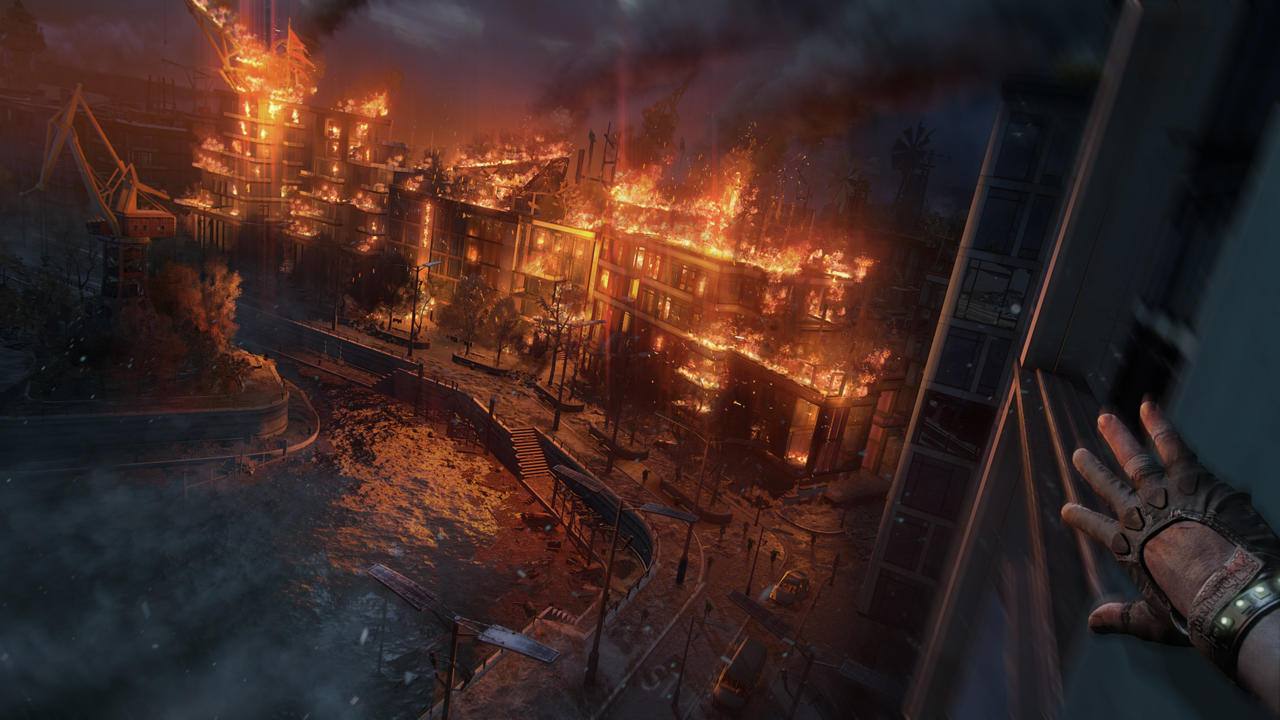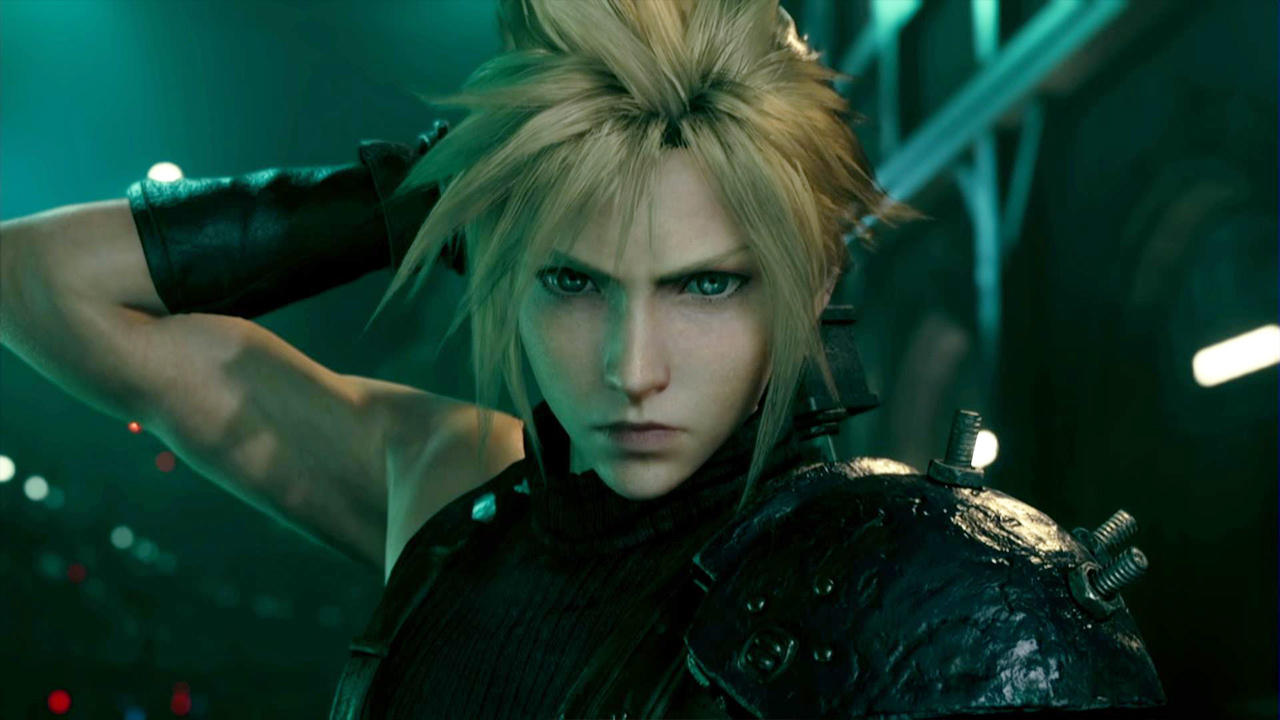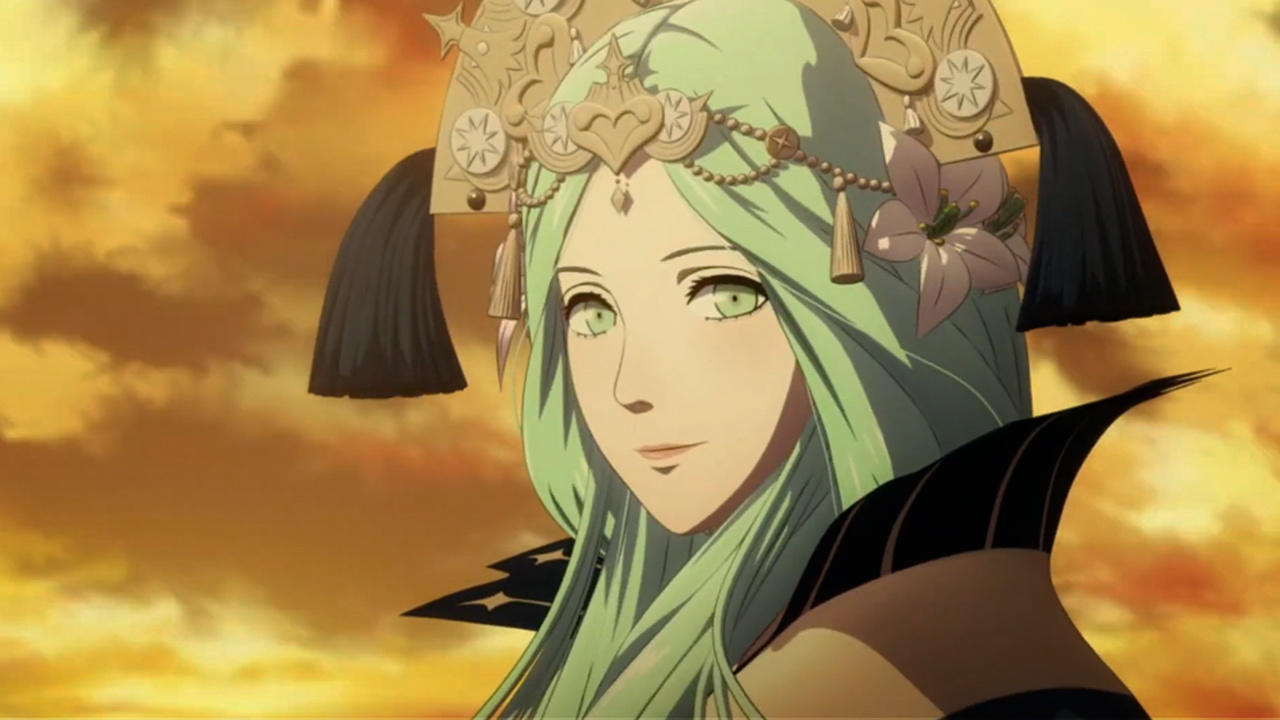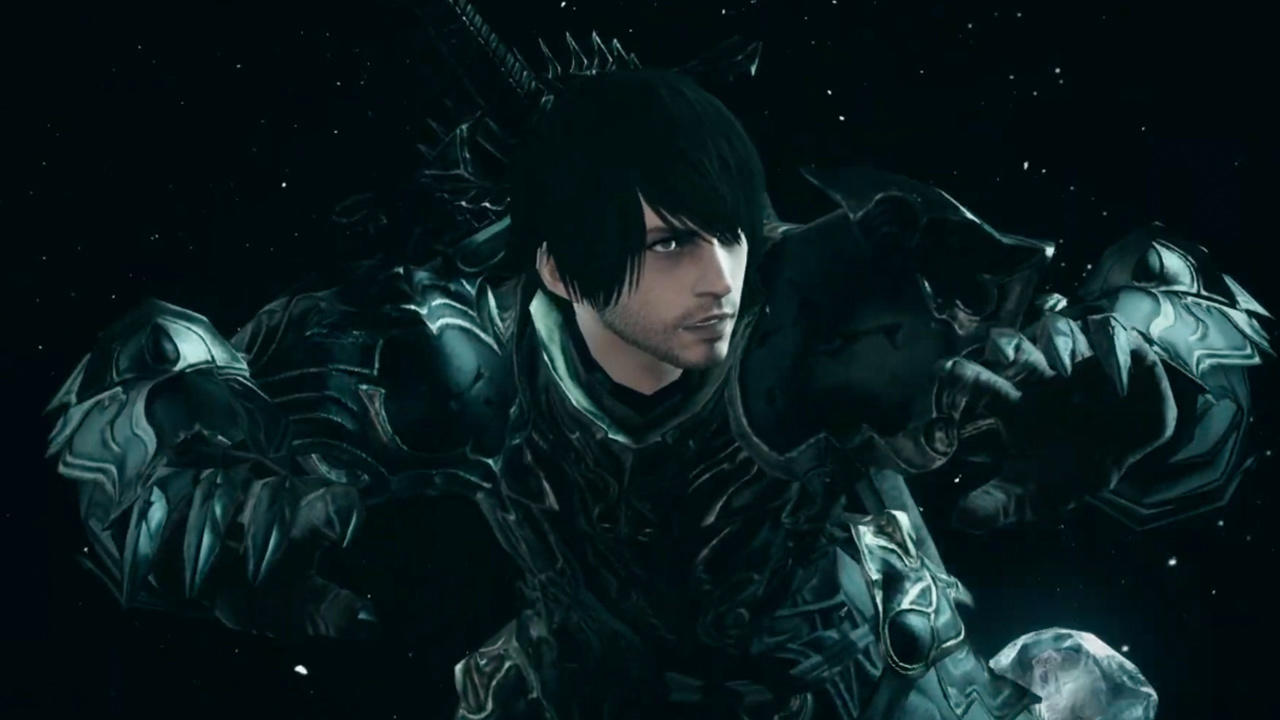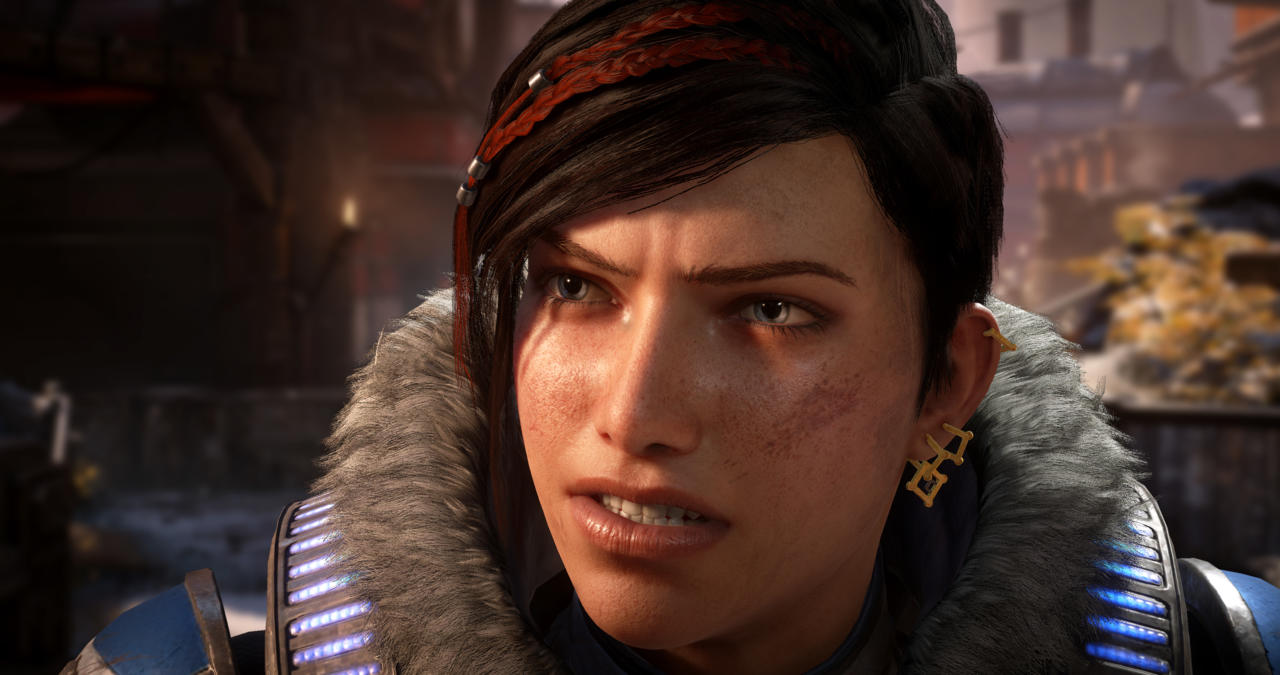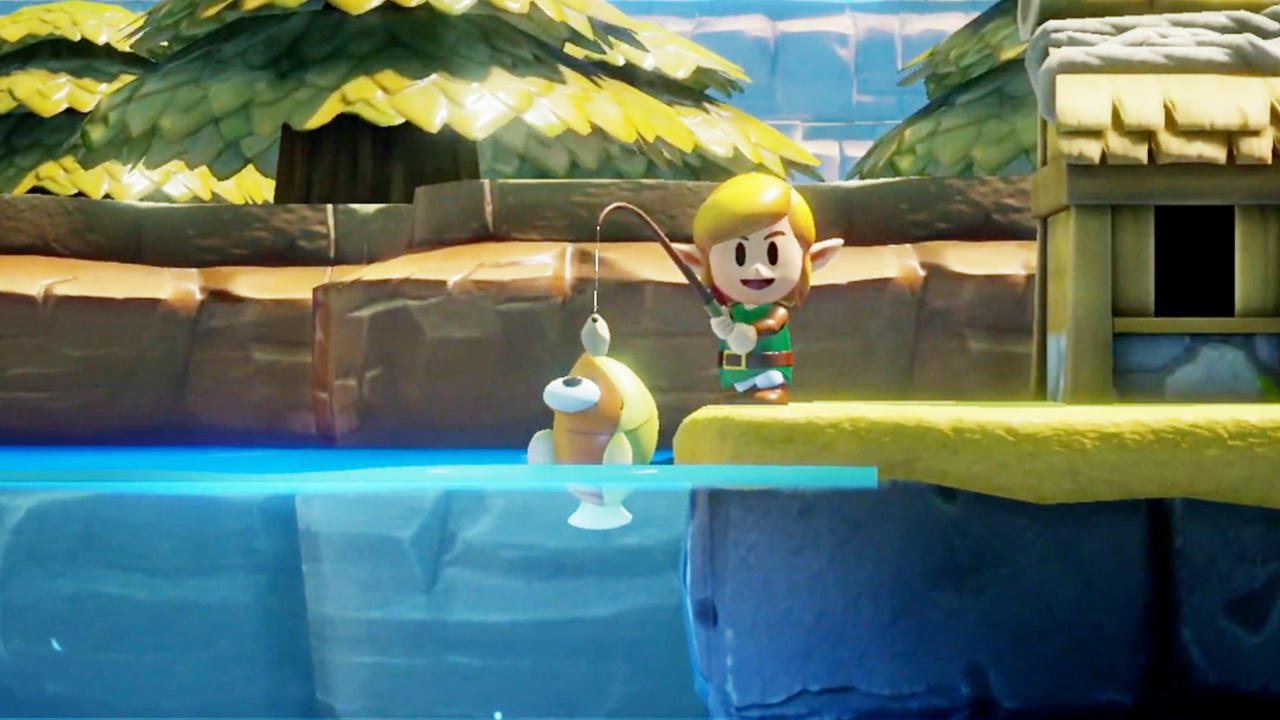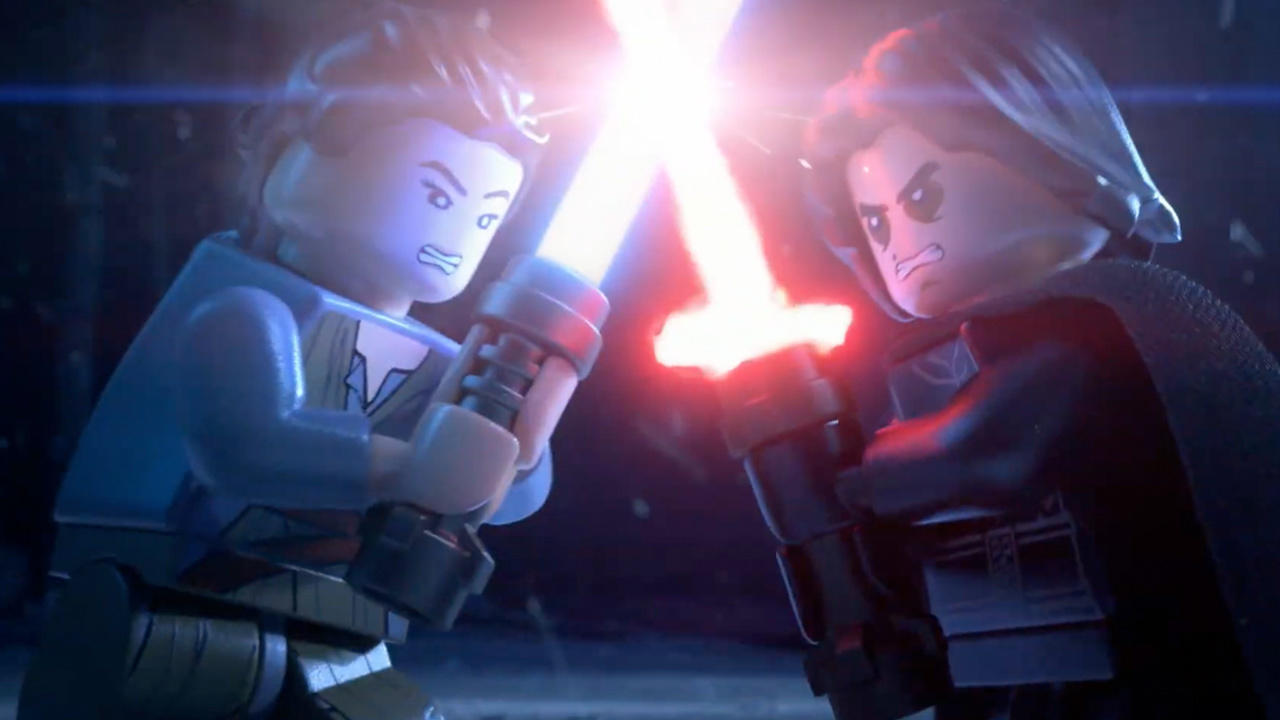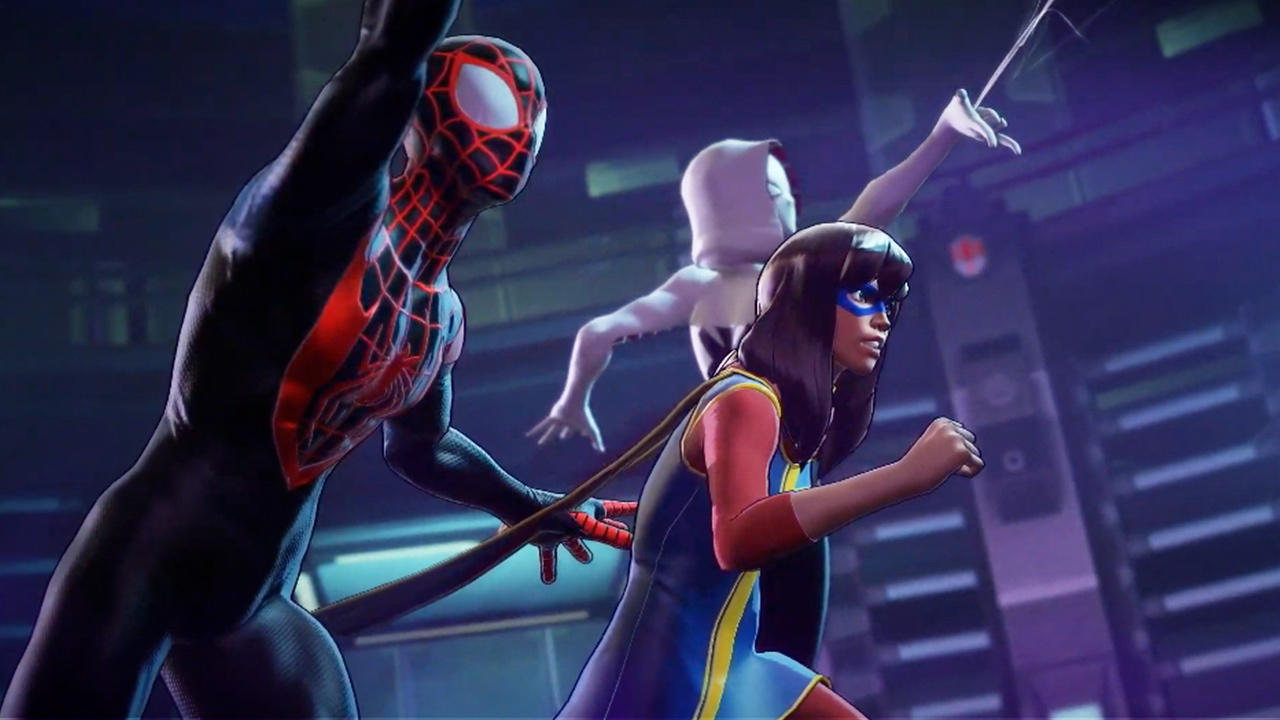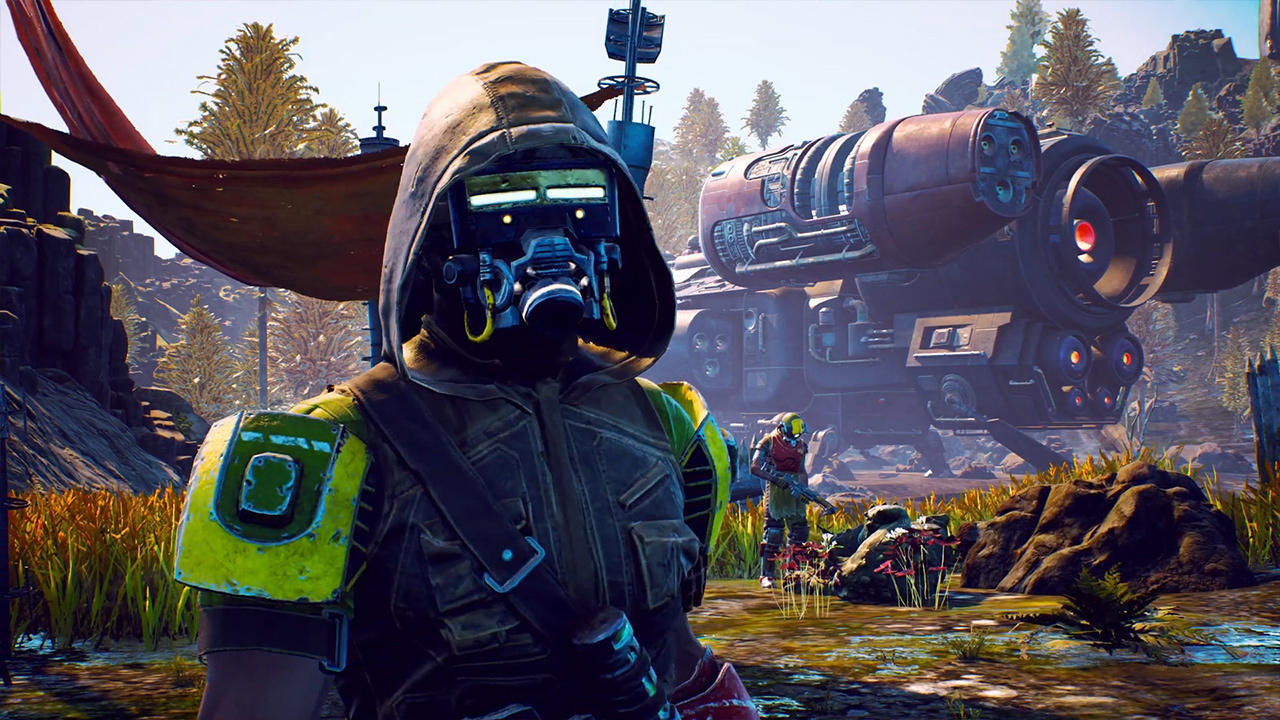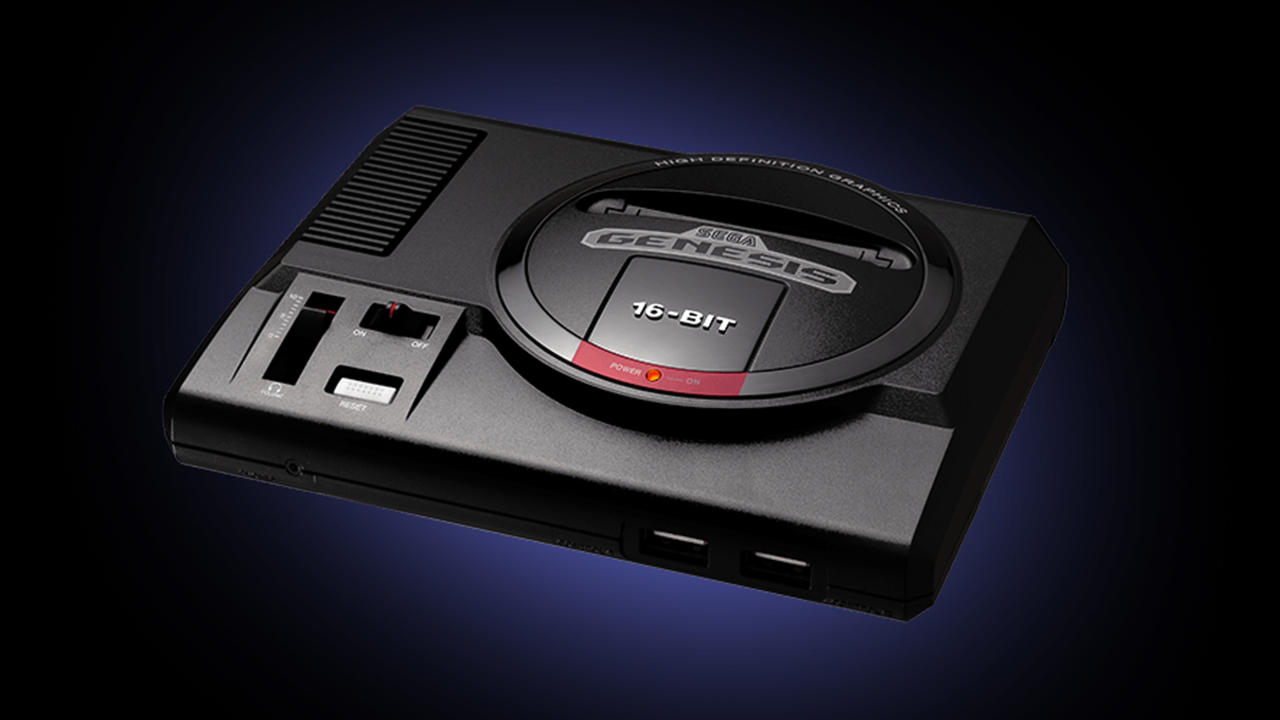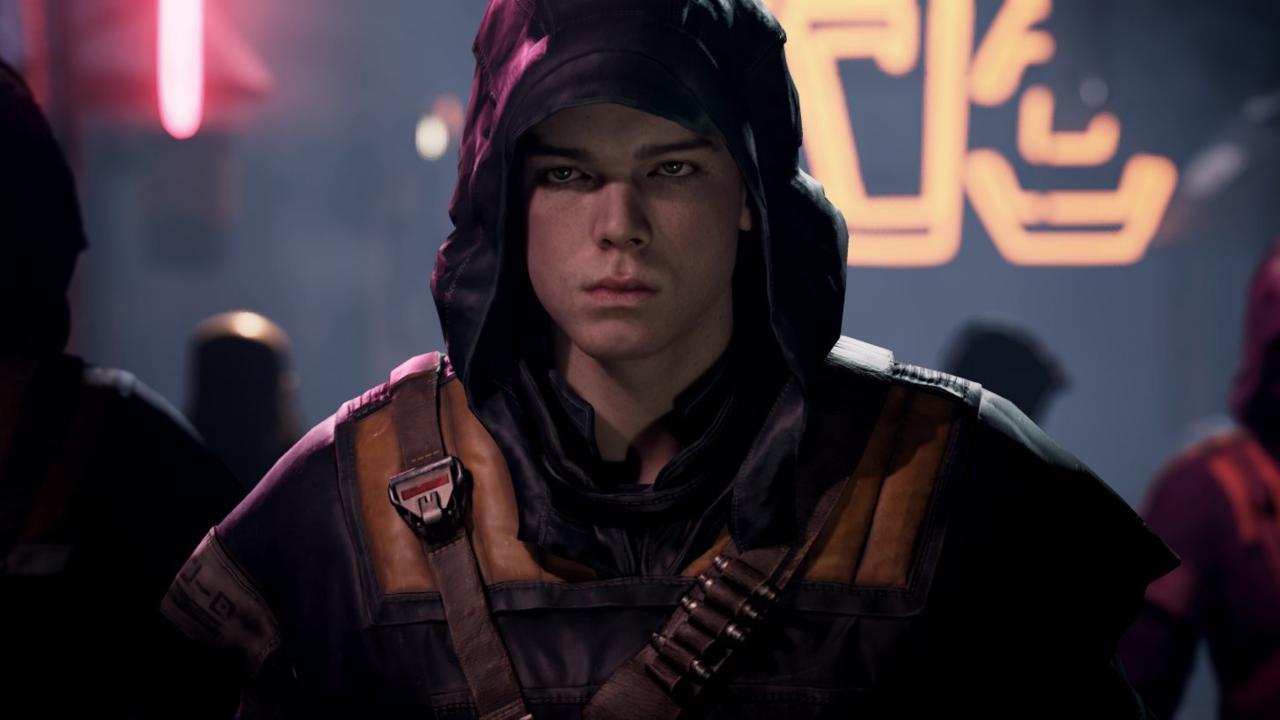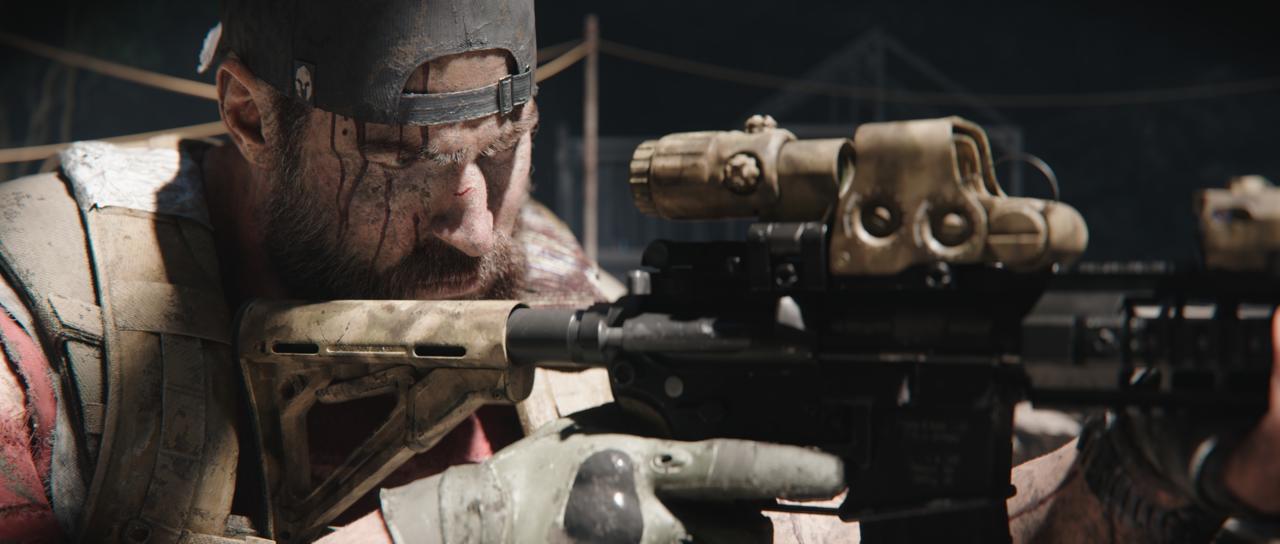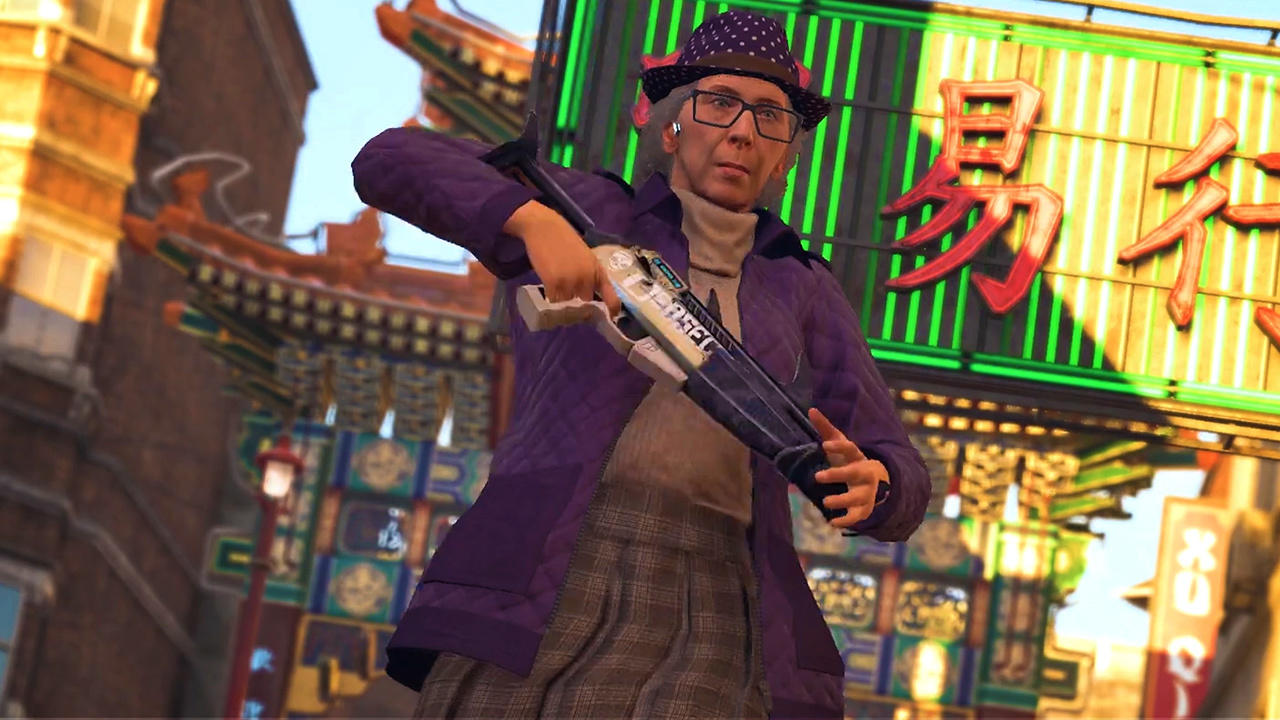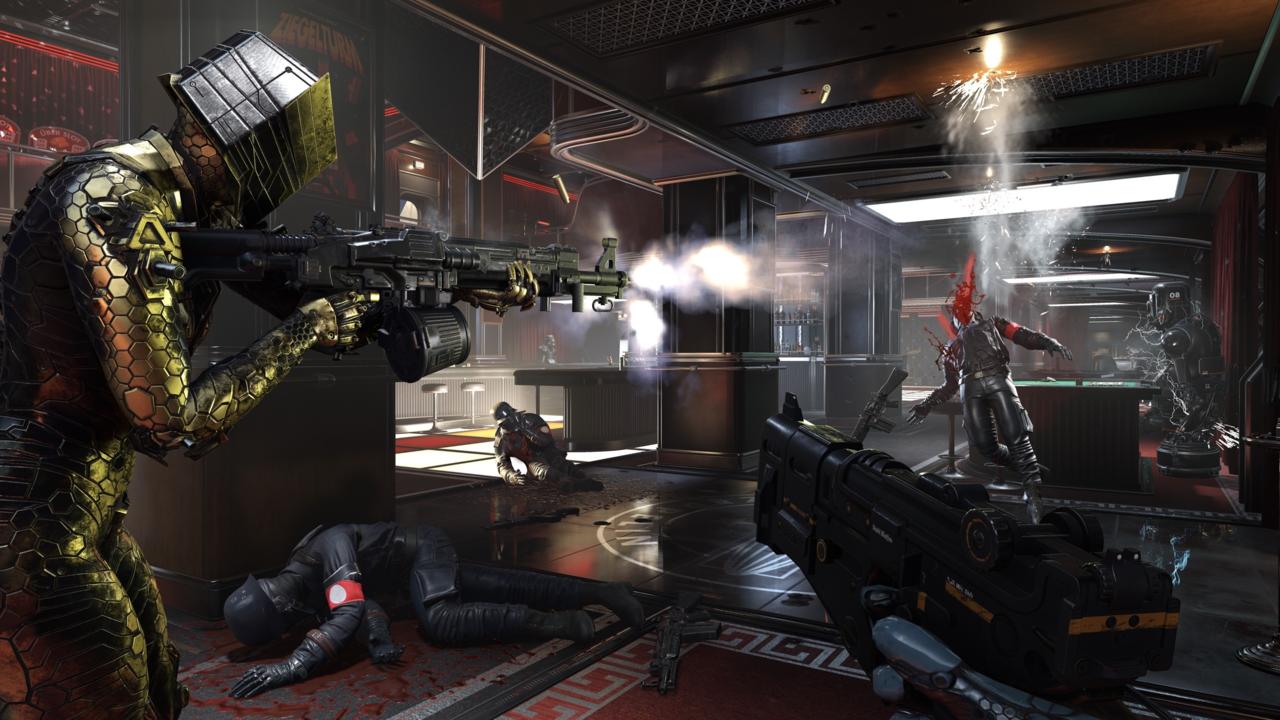The Best Games & Tech Of E3 2019: Final Fantasy 7 Remake, Cyberpunk 2077, And More
GameSpot may receive revenue from affiliate and advertising partnerships for sharing this content and from purchases through links.
E3 2019: The Best Games And Tech
This year's E3 was packed with fantastic new games and hardware to play. With so much news, trailers, and announcements, it's always difficult to narrow down our choices for our Best of E3 Awards. After putting our heads together, we managed to compile a list of games and hardware that we believe to be the most exciting at the show. The choices below are some of the industry's most promising experiences, and we cannot wait to hear more about them.
However, every game and product in this feature needed to meet the following requirement: it must have been playable at the show. This means anything that was teased or only shown as a trailer didn't count. Scroll down to see all the most exciting new games and tech we've deemed as the best of E3 2019.
Our GameSpot Best Of E3 awards represent everything we adored at the show, but there are plenty of other exciting new games and tech at the show that you might've missed. For a rundown on the biggest news on the latest games, check out our press conference roundups for EA Play, Microsoft, Bethesda, Ubisoft, Square Enix, and Nintendo. You can also check out our feature highlighting all the biggest games and our roundup of the biggest trailers.
If you'd like to see the games we've highlighted in action, then watch the video version above. Otherwise, what were your favorite moments of the show? Are there any specific games you're looking forward to? Let us know in the comments below.
Borderlands 3
It's been seven years since the release of Borderlands 2 in 2012, so fans have been eagerly anticipating Gearbox's next entry in the popular shooter-looter series. Borderlands 3 is finally coming this September, and after playing it at E3 2019 we came away excited to see and play more.
A key component of the Borderlands series is its weapons, and we found that the weapons feel more distinct and that there was simply a wider variety of guns at your disposal. Specifically, the shotguns felt super punchy and had strong knockback, while the sound design was excellent as well, effectively communicating the heavy thud and shock. Another highlight in the gun department were the Hyperion weapons that have different abilities when aiming down sights. One weapon randomly fires laser beams every few shots while another has a shield that returns bullets to your magazine. Another is a pistol that fires zip rockets as its secondary. This is all to say, Gearbox seems to be on a good path with guns.
Another big component of Borderlands 3 are the characters. All of the ones we've played so far, including Moze, Zane, and Amara, have their own distinct feel and playstyle focusing around roles like tank, rogue, and others that are balanced somewhere in the middle. Not only that, but another nice tweak with Borderlands 3 is enemies appear to recognize which character you're playing as, meaning they'll say different things to you.
Our main takeaway is that Borderlands 3 doesn't feel like a massive departure for the Borderlands series, but instead something that's both expanded and refined, especially with the gunplay. Borderlands 3 launches on September 13 for PlayStation 4, Xbox One, and PC.
Bleeding Edge
Ninja Theory has a stellar track record for producing action-oriented, story-driven games with an evocative cast of characters. Games like DmC: Devil May Cry and Hellblade stand as some of the developer's best titles, and both of which have come to define the studio's particular style. However, they're taking a noticeably different path with their upcoming multiplayer game Bleeding Edge, which reconfigures their penchant for stylish-action games and puts it into the mold of a team-based arena brawler.
Essentially, Bleeding Edge is a competitive game by way of Overwatch. With a crew of scrappers divided into three classes (assassin, support, defense), you and your team will capture territory and use your skills to beat down the competition. We felt right at home diving into Bleeding Edge, and Ninja Theory's touch for responsive combat and vibrant visuals is on full display here. The roster of fighters features a visually impressive and emotive cast of characters, and Bleeding Edge is certainly one of the more fun and exciting games coming to the Xbox One.
Cyberpunk 2077
CD Projekt RED continues to show how expansive Cyberpunk 2077 will be. This year's hands-off E3 demo showcased player choice through story and gameplay--and there's a lot of it. Dialogue trees feature options that unlock based on the aspects of your character you choose and focus on developing, like your backstory, your perks, abilities, what's going on around you, and more. In a similar respect, your experiences and paths through missions will differ based on the playstyles you choose and the characteristics you pick for your protagonist, V.
We also learned more about the story, which is going to heavily feature Keanu Reeves. His role as Johnny Silverhand was first revealed at E3 2019; it turns out, Johnny is a "digital ghost" that resides in your head, making him something like a Tyler Durden from Fight Club or Joker from Batman: Arkham City. That means you'll get a lot of Keanu as you work your way through Night City, and CD Projekt RED said the relationship you shape with Johnny is a big part of the story. Keanu alone was cool, but coupled with all the choices and variety Cyberpunk 2077 seems to be offering in story and gameplay, there's a lot there that's got us excited.
Control
The latest game from Remedy, the studio behind games like Max Payne, Alan Wake, and Quantum Break, continues to impress us. If there's one thing the studio is good at, it's creating interesting third-person shooting scenarios, and Control appears to double-down on this tradition. The game puts you in the shoes of Jesse Faden, the director of the Federal Bureau of Control, an agency concerned with the study of defying the law of physics. You'll follow her as she explores the agency's New York headquarters, but even after seeing a number of demos over the past couple of years, there's a strong air of mystery about the narrative.
But we did get a better sense of how Control's combat would evolve over the course of the game. What we played this year at E3 gave us a strong indication that this is the Remedy we know and love working at full steam. Seeing a larger variety of enemies and arena situations emphasized how much we would need to juggle Jesse's variety of tools and abilities. There was an incredibly fantastic, fluid feeling of using telekinetic abilities to leap around, pick up objects, and open up attacks on enemies, combined with switching your shapeshifting gun between different modes to finish them off. It's the kind of combat design that makes you hungry for more fights, and perhaps that's unsurprising coming from Remedy, but it was nevertheless one of our favorite titles at E3 2019.
Doom Eternal
It's hard to think of how Doom could one-up itself after the surprisingly, incredible reboot from 2016, but Doom Eternal is pushing the franchise even further. A lot more emphasis is being put into resource management, moving fast, and being an even more savage Doom Slayer.
Doom Guy has so many more tricks up his sleeve this time around, like a shoulder mounted grenade launcher and flamethrower. But the core arsenal has changed in meaningful ways. The iconic double-barrel shotgun now has a hookshot that’ll propel you towards enemies. The combat shotgun’s alternate fire is a sticky grenade, and the heavy cannon acts a sort of sniper rifle, too. And you won’t survive without constantly using your dash. That’s all in the service of giving you extra tools for the challenges you face in the game, because demons have changed.
Enemies aren’t just aggressive and overwhelming; it’s not just about blowing through nasty demons now, it’s about handling unrelenting waves of enemies with their own unique abilities. You can shoot out specific parts of demons to subdue their strongest attacks, like the Arachnotron's gun attached to its tail. Doom Eternal is all about creating dense, challenging combat arenas, and from our experience, it's devilishly succeeding.
You can’t just rely on sticking to your guns anymore. Doom Eternal demands that you use everything at your disposal, and never stop until you put an end to hell on earth.
Dying Light 2
With its fast-paced parkour and brutal combat ratcheted up by several degrees, Dying Light 2 advances many of the previous game's defining systems. But in a massive change from the original, it leans more heavily into its reactive world-building, with many key choices forever changing the state of the world. After the events of Techland's 2015 game, the infection has spread globally, and in the 15 years since the original story, the world has regressed into a "modern dark age." With human factions fighting over one of the last cities, the new protagonist has to contend with a growing infection while surviving against hostile undead in the open world.
We were big admirers of the original game, and it was really impressive seeing how much growth the sequel has over its predecessor. In the E3 2019 demo, we got to see how the upgraded traversal and combat gameplay works out, allowing you to freely blend both in a more seamless and dynamic way. The moment-to-moment gameplay of Dying Light is still intact with the sequel, but it now introduces those mechanics into evolving story. Many of the different interactions we saw in the demo could irrevocably alter the flow of the story, even forever changing the very layout of the map. The sequel maintains the sense of speed and freedom found from parkouring over rooftops, with the infected and other hostile humans nipping at your heels.
Final Fantasy VII Remake
We've finally had the opportunity to play Final Fantasy 7 Remake, and while there are still many questions left to answer, our first impression was very reassuring. It's been known for a while now that Square Enix was going to change and reformat much of the original experience. From dialogue to combat, this new version of Final Fantasy 7 is indeed very different compared to the 1997 game. It's also, at least so far, very well made.
The E3 demo was set in Mako Reactor No. 1, the power plant that Cloud and Barret blow up at the start of the game. But, of course, they must first fight the imposing Sentinel Scorpion boss. This battle is memorable to anyone familiar with the original game, and it's been souped up in ways that take advantage of both the real-time combat and traditional menu-based command system. While there will no doubt be people that want the remake to be as faithful as possible, this new system is fast and fluid, and it doesn't take more than a few minutes to get the hang of it. Once it clicks, we quickly forgot all about what Final Fantasy 7 was and fully embraced what it can be. Remaking a game like Final Fantasy 7 is a risky endeavor, but it's clear that Square Enix is putting forth a lot of effort to revive it for fans and revitalize it for a modern audience.
Fire Emblem: Three Houses
Fire Emblem: Three Houses releases on July 26, but up until recently, we didn't actually know much about it. We had the opportunity to get hands-on time with the game during E3, and while the combat will be familiar to anyone who's played a Fire Emblem game--though not totally the same--the first phase of the game is more reminiscent of Persona than classic FE.
During this "school phase," which consists of a calendar year that you play week by week, you're a teacher training your students in the combat arts. At the beginning of the week, you choose from a number of activities for your students, each of which costs one of a limited number of "activity points." Choosing one activity may lock you out of another, which means you have to figure out how best to spend your limited time in order to get your future army in tip-top shape.
In short, it's like if Persona's school life management collided with Fire Emblem's traditional tactics and created the Harry Potter game of my dreams.
Final Fantasy XIV: Shadowbringers
The reason Shadowbringers expansion is so significant to the MMORPG Final Fantasy XIV is because it delivers many changes to the core formula along with a slew of new content. The new areas like Il Mheg and The Crystarium are lush, vibrant worlds offer a different type of atmosphere and the next questline is aiming to touch on the game's past in meaningful ways.
However, the upcoming Jobs--Gunbreaker and Dancer--give players new ways to fight. Gunbreaker brings in a stylish and effective option for the Tank role, and it's a great touch for fans of Final Fantasy VIII, while Dancer puts a spin on the DPS role by being able to support/buff other party members in a psuedo-rhythmic mechanic. Even the inclusion of Viera and Hrothgar races offer more aesthetic options for your characters. Additionally, the Trust system makes Dungeon runs more accessible by implementing AI teammates--but this also makes the Scions (key characters in the story) feel much more involved. Side quests are going to scale with Job level, Role Quests add another layer to traditional story progression.
Shadowbringers is the third expansion in FFXIV, yet it still delivers important changes and exciting additions to an already-dense MMORPG.
Gears 5
Gears 5 continues the legacy of Microsoft's tenured Xbox third-person shooter franchise. As the third game developed by Gears of War veteran Rod Fergusson and his team at The Coalition, Gears 5 looks to iterate on the series in all the right ways. Microsoft didn't discuss single-player at E3, but it did showcase the new PvE mode called Escape. And in our short time mowing down monstrous beasts while the clock ticked, Gears 5 has proven to us that the series is done playing it safe.
Gear of War is well known for its massively popular Horde co-op mode, which became a phenomenon all its own. However, the Escape mode expands upon the cooperative action in previous Gears games, offering complex, more nuanced fast-paced action. In many ways, Escape takes on the form of a hero shooter by assigning players to specific classes on a team--each armed with unique special abilities--as they work to fight off enemies and secure a route out of an infested hive. Character classes aren't a new concept for the series, but the tension of having to escape and defend your team supplied plenty of strategic thrills and jolly cooperation.
There's still more to see from Gears 5, but what we've had the opportunity to play at the show has us excited for what the future holds next. If The Coalition can imbue the rest of Gears 5 with refreshing ideas like this, then it could very well be the return to form the series has needed for a while now.
The Legend of Zelda: Link's Awakening
Even more than 25 years after its initial release, The Legend of Zelda: Link's Awakening remains one of the most beloved entries in Nintendo's storied series. When it first arrived for the Game Boy in 1993, it was a technical marvel, a full-fledged Zelda adventure that fit in the palm of your hands. As impressive as that was at the time, however, it was the game's affecting story and charming cast that endeared it to a generation of gamers. The novelty of having a portable Zelda adventure may have since faded, but the emotional heart of Link's Awakening still resonates nearly three decades later.
That pedigree alone would be enough to make the upcoming Link's Awakening remake for Switch one of the most anticipated releases of the year, but Nintendo has done a stellar job in reimagining the classic adventure for modern hardware. The traditional, top-down Zelda gameplay feels just as delightful as ever, and the developers have implemented some welcome quality-of-life improvements to the game. Link's sword, shield, and other accessories are now equipped at all times, alleviating much of the clunkiness of the original and its restrictive two-button layout.
It's the visuals, however, that leave the biggest impression. Nintendo sought to preserve the sense of smallness the original Game Boy game evoked with this Switch remake, and the result looks and feels like a living diorama. Even if you've never played the original, it's hard not to be taken in by the game's charming world, which is why Link's Awakening is one of our favorite titles from E3 2019.
Lego Star Wars: The Skywalker Saga
Lego Star Wars: The Skywalker Saga is a brand-new game for the Lego Star Wars franchise, with no apparent ties to the original games. It also ditches the series' linear mission structure for an open world format. The galaxy from a long time ago can be freely explored from your ship, and you can travel to any planet from the Star Wars movies, from Tatoonie to Coruscant. Who you encounter and how each planetary setting is shaped depends on when you decide to visit. From The Skywalker Saga's title screen, you choose which of the nine mainline Star Wars movie time periods you want, and then the galaxy rebuilds itself in response.
The Skywalker Saga seems to be a phenomenal experience, blending the goofy humor of the Lego series with the lovable characters and storytelling of Star Wars. Placing the game in an open world setting is also a good move. Much like New York in Lego Marvel Super Heroes and Gotham in Lego Batman, each of the planets in The Skywalker Saga can be freely explored and offer humorous side quests to complete. Solving optional riddles and puzzles earns you Kyber Bricks, and these collectibles are actually worth your time, as you can use them to unlock new ships. Upgrading your vessel is very helpful for tackling The Skywalker Saga's massive space battles--which look a ton of fun to play and seem to be a lot like the space battles in 2005's Star Wars Battlefront II.
Previous Lego Star Wars games have always received plenty of love, but The Skywalker Saga seems to reinvent enough of those games' formula to offer a brand-new experience that's worth the time of both old-time fans and series newcomers.
Marvel Ultimate Alliance 3: The Black Order
Marvel Ultimate Alliance 3: The Black Order is perhaps the most comfortable gaming experience that a person can have at E3 2019. For anyone that has played the previous two games in the series, it will be immediately familiar. However, even without that history, Ultimate Alliance 3 is easy to pick up and quick to have fun with.
The cast of characters is vast, including the most beloved Marvel characters. The eclectic collection takes into account the tastes of new-school MCU fans, as well as old school Marvel heads, and there are some really niche picks in the roster. Combat is a nice balance of satisfying mashing and strategically timed special moves that do big damage, and clearing out huge groups of enemies in an explosive and flashy way.
Like Diablo and Torchlight, there's a simplicity to Ultimate Alliance 3 that makes it both attractive to anyone and also immediately fulfilling to play. Marvel and developer Team Ninja have been working to craft a story that actually brings all the various heroes and villains together in a way that makes sense. And since it supports local multiplayer, putting together a team of heroes that can go on missions together should be easy.
The Outer Worlds
The Outer Worlds isn't reinventing the wheel. The game looks, plays like, and features similar characters and quests to Fallout: New Vegas. Not that that's a bad thing. After the fiasco that was Fallout 76 at launch, it's nice that we can expect a game that delivers the single-player, story-driven, NPC-filled Fallout experience that we know and love. The Outer Worlds doesn't need to do anything fundamentally different.
If Fallout 3, New Vegas, and 4 passed you by, then The Outer Worlds presents an excellent opportunity to learn why those games have such fierce followings. Though Obsidian Entertainment's excellent storytelling wasn't on display for The Outer World's E3 demo--the quest's narrative and simple test of morality wasn't anything we haven't seen dozens of times before--follow-up interviews with the developers revealed The Outer Worlds's Flaw system could present some fascinating new ways to play through a tried-and-true formula. The game's Flaw system is an intriguing risk vs. reward dynamic for how you engage The Outer Worlds' many worlds. Suffer enough damage while getting struck on the head and you'll get Permanent Concussion, a flaw that lowers your intelligence and makes it harder to craft certain items and weapons.
That said, each Flaw comes with perks, too. Permanent Concussion unlocks "dumb" dialogue options, for example, giving you more ways to navigate a conversation. Except on The Outer Worlds' hardest difficulty, every Flaw is optional so you get to decide whether the buff it provides is worth the nerf. For once you choose to take on a Flaw, it sticks with you for the rest of your playthrough. It's an interesting feature that we wish we could have actually seen play out, but it sounds like it's something that will open up brand-new types of character builds.
Pokemon Sword & Shield
Each new generation of Pokemon games builds upon the series in expected ways, but Pokemon Sword and Shield for Switch look to be the biggest generational leap the franchise has taken yet. While the new games don't radically reinvent the series, they introduce enough new elements to shake the experience up. Naturally, there are a new assortment of Pokemon to capture and raise, but it's the new Dynamax battle mechanic that has the most profound impact on the gameplay. Like Mega Evolution before it, Dynamax can only be triggered once per battle, but this time, it can be applied to any Pokemon, and it only lasts for a limited time, forcing you to think more strategically about when you employ it and which monster you use.
The visuals have also gotten an impressive upgrade in the move to Switch. Not only are character and Pokemon models much more detailed and expressive than ever before, developer Game Freak has taken full advantage of the console's extra horsepower to bring the new Galar region to life. For the first time in the series, Sword and Shield feature an explorable open-world environment known as the Wild Area--a sprawling expanse of land stretching between cities where wild Pokemon can be found roaming about. It's what fans have always dreamed of when imagining what a true 3D Pokemon game would look like.
Between that and Max Raids--four-player cooperative battles against a colossal Dynamaxed Pokemon--Sword and Shield are shaping up to be the most ambitious Pokemon games yet, and we can't wait until we can return to Galar later this year.
Sega Genesis Mini
The Genesis Mini was a prominent part of Sega's booth at E3, but our hands-on time off the show floor allowed us to hold the unit and judge its build quality, peruse the system menu, and of course, check out a handful of the 42 built-in games. The news of M2's involvement as the studio responsible for the Mini's software emulation was the first sign that the new Genesis might be worth caring about after all, silencing most of the skepticism stemming from prior poorly made Genesis systems by less reputable teams.
And now that we've had a chance to pore over the Mini's library of games, it looks like our assumptions were accurate. The Genesis Mini is a modern system, with slick menus and options for customizing the experience, but once you're in a game, it feels like the real, old, deal. Furthermore, it's reassuring to know that Sega wants these games, many of which were regional exclusives, to be enjoyed by new audiences that never had the chance--every game can also be translated into multiple languages. From what we've seen so far, the Genesis Mini is shaping up to be a solid product that will both meet the standards of retro game enthusiasts and offer something new to people who simply want to relive the glory days of discovering new games for the Sega Genesis.
Star Wars Jedi: Fallen Order
What EA showed of Star Wars: Jedi Fallen Order during its stream was perhaps not the best indicator of the overall experience. If you watch that, the game looks like an exciting, high-octane action title in the same vein as something like Naughty Dog's Uncharted. However some E3 2019 attendees were given the time to get hands-on with the game in a behind-closed-doors demo and get a feel for how the lightsaber combat plays.
Developer Respawn Entertainment has used the phrase "thoughtful" combat to describe its mechanics and, at the show, we learned that what this means is a slower pace for lightsaber combat. Actions are designed to be more considered so that protagonist Cal can use his in-training Force powers and lightsaber abilities to control the arena around him and change the odds in his favor.
Of course, alongside the Dark Souls-like combat, there are the bombastic cinematic sequences that you'd expect. Cal is shown climbing up the side of an AT-AT, hijacking it and wreaking havoc on the Empire's invading forces to save the Wookie rebels. From what we've played, Jedi Fallen Order looks to be a rewarding and exciting Star Wars experience, and one we're eager to play more of.
Tom's Clancy's Ghost Recon Breakpoint
Even though it was announced before E3 official got underway for 2019, Ghost Recon: Breakpoint from Ubisoft still managed to endure as one of our favored games of the show. The follow-up to Wildlands sees one of the Ghosts' greatest allies, Cole D. Walker (John Bernthal) go rogue and establish is own elite military unit, get in the drone business. Naturally, it's up to another Ghost (that's you!) to stop him.
From what we played at the show, Breakpoint doesn't exactly feel like a wild departure from Wildlands, but it does feel like it vastly improves on many of its predecessor's mechanics, demanding that you pay more attention to what you're doing. Enemy units are more aggressive, and you're more fragile. You'll need to avoid taking on too much fire, lest your overall health take a permanent hit, and you'll also need to make use of bivouacs (temporary camps) to recuperate as you traverse the open world. We found that we needed to put more effort into playing stealthy and smart--taking a guns blazing approach wasn't impossible, but resources were limited and it certainly felt like an uphill battle against a much larger and more powerful force.
Breakpoint also introduces a new loot system for its weapons and equipment--things like guns, ghillie suits, and pieces of armor will drop from enemies and have different stats associated with them in an RPG-like fashion. We've got our reservations about this change, but it did mitigate our Wildlands tendency to just make an immediate B-line to the locations where we knew good guns would be--Breakpoint has a more natural feel to its exploration because of that.
Breakpoint left us feeling positive about the series' swing back to a more demanding military tactics game. Jon Bernthal doesn't hurt either--it seems like an emphasis on his personality might make for a more interesting villain. Also, he brought a dog to the Ubisoft press conference, and that was very good.
Watch Dogs: Legion
Ubisoft Toronto is pushing the central ideas of Watch Dogs a lot further with Watch Dogs Legion. Set in a future London where the economy has crashed, the government is failing, a private military corporation has taken over, and drones populate the skies, your job is to raise a resistance to fight the surveillance state and retake the city. You do that by recruiting people to your cause--any people. The entire population of London has the potential to be a member of DedSec if you do the work to recruit them, and once they're on your team, they become playable characters.
It's the character system that makes Watch Dogs Legion so impressive. Every character in the world feels distinct, with their own abilities, perks, and flaws that make them useful (or not so useful) to your hacker collective. Using the Profiler, one of Watch Dogs' mainstay devices, you can see a whole bunch of info about any character, including their routines and what problems they're facing in their lives. Help them out with those problems (like dealing with loan sharks or breaking relatives out of prison) will raise their opinion of DedSec, which can then make them recruitable. You can freely switch between your recruits and they appear in cutscenes and talk to one another on the radio, making any random NPC potentially the main character of the story. It's an extremely cool, deep system of technology that Watch Dogs feel like you're running through its five storylines with your own specific crew of characters.
Wolfenstein: Youngblood
MachineGames' rebooted Wolfenstein series has established the developer's pedigree with creating hard-hitting, powerful shooters with lots of options for how to move through levels and engage with enemies. Youngblood captures the Wolfenstein feel in a budget co-op title, where you can work together with a friend or AI companion to wreck a ton of Nazis. Stealth is still a viable option, as is dual-wielding a pair of monster guns and tearing through all opposition, but MachineGames has added a lot of elements that make teamwork essential. Despite the RPG focus, Youngblood feels like a more arcade-oriented version of Wolfenstein that's a little lighter and more accessible, while still maintaining the challenge of the rest of the other games in the series.
The best part, though, is the two new characters Youngblood introduces to the Wolfenstein family. Soph and Jess are BJ Blazkowicz and Anya's twin daughters, and they're not only well-trained bad-asses like their parents, they're also hilarious, inexperienced tomboys with a fun and funny relationship. Hanging out with the twins is what really elevates Youngblood, but its co-op gunplay and big pile of customization options are a good time, too.

